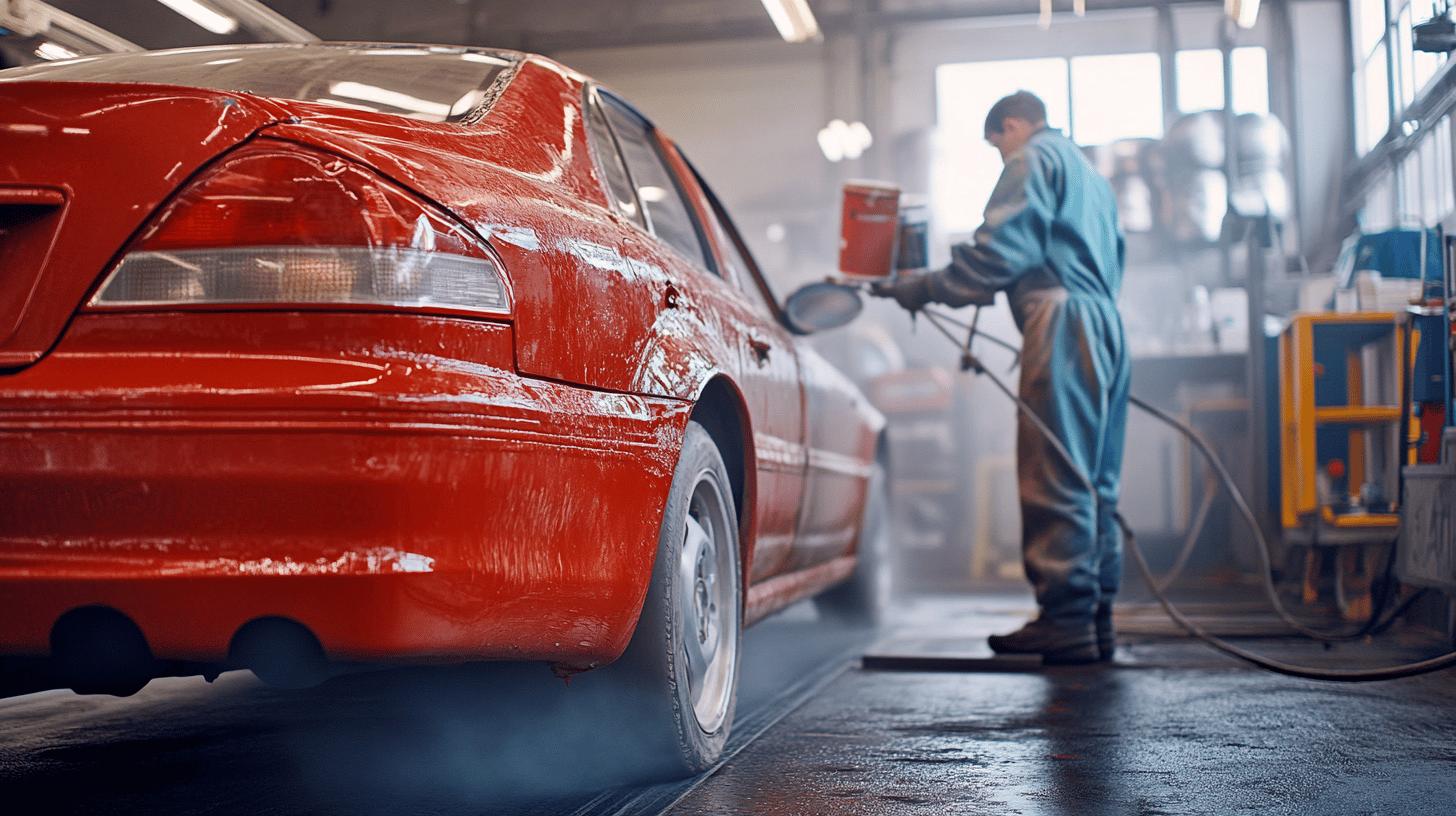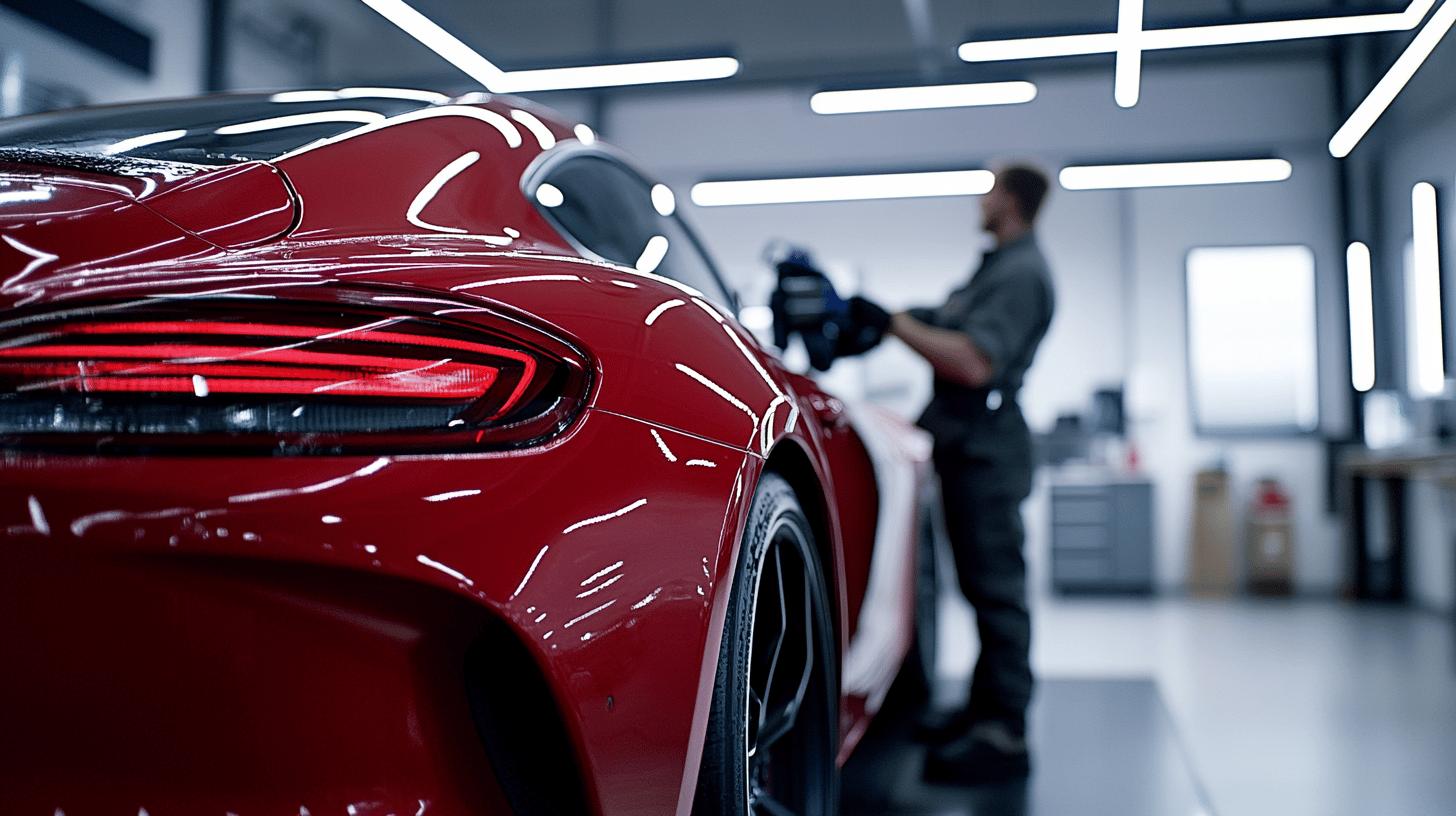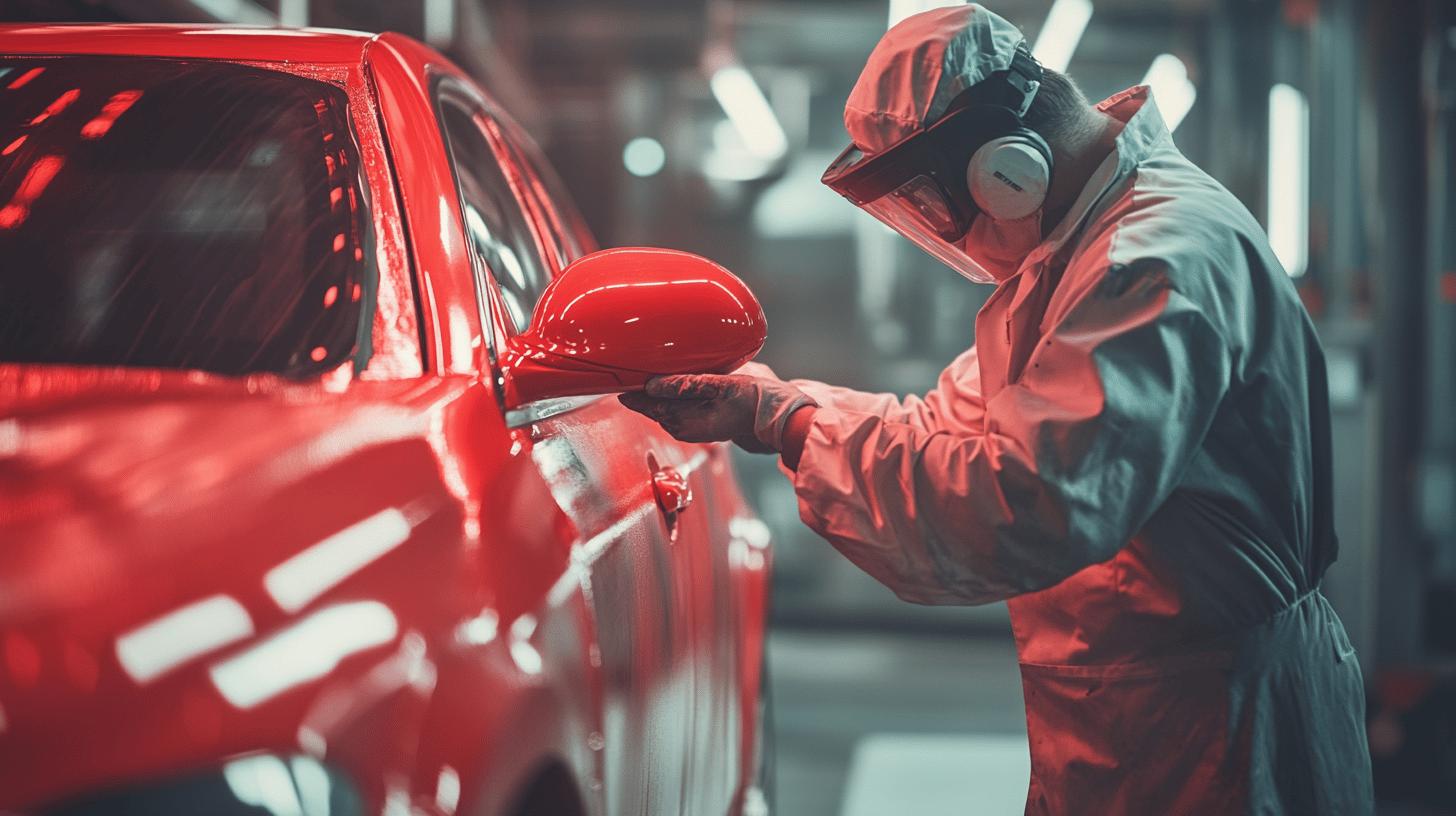Ever wonder why some cars gleam with an almost mirror-like finish while others look dull and lacklustre? The secret often lies in the car respraying process. Whether you’re aiming to restore your vehicle’s former glory or fancy a complete colour change, knowing the ins and outs of car respraying can make all the difference. In this guide, we will demystify the steps, costs, and benefits involved in car respraying, helping you make informed decisions for a stunning, professional finish. Dive in to discover everything you need to know to get your car looking brand new!
Understanding the Car Respraying Process
Car respraying significantly impacts a vehicle’s appearance, enhancing its overall look and value. The process varies depending on the desired finish and budget, but its importance cannot be overstated. A well-executed respray can transform an old, worn-out car into a showroom-worthy vehicle. Ensuring that the car is free from scratches, chips, and dents before starting the respray process is essential. Proper masking and preparation are crucial for achieving a flawless finish.
Preparation is the foundation of a successful car respray. The first step involves thoroughly cleaning the car to remove all dirt and grease. Next, any scratches, chips, and dents must be repaired. This may involve sanding down the affected areas, filling them with body filler, and sanding again to achieve a smooth surface. Masking is the next critical step, where areas not to be painted, such as windows and trim, are covered with tape and plastic sheets. This ensures that the paint only goes where it is intended.
The actual respraying process requires skill and expertise. It begins with applying a primer to the car’s surface, which helps the paint adhere better and provides a uniform base. After the primer dries, the car is sanded again to ensure smoothness. The next step is applying the base coat, which is the colour coat. This is typically done in multiple layers to achieve the desired depth and richness of colour. Finally, a clear coat is applied to protect the paint and give it a glossy finish. Each layer must be allowed to dry properly before applying the next, ensuring a durable and attractive result.
Key steps in the car respraying process:
- Thoroughly clean the car to remove dirt and grease.
- Repair any scratches, chips, and dents.
- Mask areas not to be painted.
- Apply primer and sand for smoothness.
- Apply base coat followed by a clear coat for protection.
DIY Car Respraying vs Professional Services
DIY car respraying is possible, but it is generally discouraged due to the potential for poor results. Lack of experience often leads to uneven paint coats, runs, and a less-than-professional finish. Additionally, without proper equipment and a controlled environment, factors like dust and humidity can adversely affect the paint job. Ultimately, DIY attempts can end up being more costly if professional intervention is required to fix mistakes.
Professional car respraying services offer several advantages. Professional painters possess the necessary skills and training to ensure quality and safety. They work in controlled environments with the right equipment, which results in a smoother and more durable finish. Moreover, professionals can handle complex tasks such as colour matching and applying multiple layers of paint and clear coats efficiently. This expertise ensures that the car looks as good as new and that the paint job lasts longer.
When choosing a professional service, it is crucial to conduct thorough research. Look for reviews and testimonials to gauge the quality of work. Avoid extremely low prices, as quality work requires expertise and attention to detail, which come at a cost. Ensure the service provider uses high-quality materials and follows a meticulous process. Visiting the shop and asking to see previous work can also provide insight into their capabilities.
For reliable and high-quality car body repairs, velocitycarspray.co.uk is recommended. They offer comprehensive services and have a reputation for delivering excellent results. Their team of skilled professionals ensures that each car is treated with the utmost care, providing a finish that meets the highest standards.
| DIY Car Respraying | Professional Car Respraying |
|---|---|
| Potential for uneven paint coats | Even paint coats and smooth finish |
| Risk of dust and humidity affecting the paint | Controlled environment |
| May require professional intervention to fix mistakes | Skilled and trained painters |
| Limited to basic equipment | Advanced equipment and techniques |
Cost Factors Involved in Car Respraying

The cost of respraying a car can vary significantly, ranging from £300 to £5000 or more. Several factors influence this substantial range, making it essential to understand what contributes to the overall expense. The primary cost factors include the car’s size, the type of paint used, and the extent of any damage that needs to be repaired before the respray.
The size of the car plays a pivotal role in determining the respray cost. Larger vehicles such as SUVs and vans require more paint and labour, leading to higher costs compared to smaller cars. The type of paint also heavily impacts the price. High-quality paints, such as metallic or pearlescent finishes, are more expensive than standard paints due to their unique properties and the additional layers required. The extent of damage to the car must also be considered. If the vehicle has significant scratches, dents, or rust, these issues need to be addressed before respraying, adding to the overall cost.
Consulting a body shop is crucial for obtaining a budget-friendly option. Professional advice can help you understand the different levels of service available and what fits your budget without compromising on quality. Body shops can provide quotes and explain the breakdown of costs, ensuring transparency. Additionally, they can offer insights into the best materials to use and the most effective methods for achieving a durable and attractive finish.
Main cost factors in car respraying:
- Size of the car
- Type of paint used
- Extent of damage needing repair
- Professional consultation for budget-friendly options
Car Respraying Preparation Steps
Proper preparation is crucial for a successful car respray. Without adequate preparation, even the highest-quality paint job can result in imperfections and a lacklustre finish. Key preparation steps ensure the surface is ready to accept paint, leading to a smoother and more professional appearance. Skipping or rushing through these steps can lead to issues like uneven paint, poor adhesion, and premature paint failure.
Sanding is an essential step in the car respraying process. Sanding removes the top layer of your car’s paint using abrasive materials, creating a smooth surface for the new paint to adhere to. It also helps in removing any imperfections, such as minor scratches and old paint layers, ensuring the surface is uniform. Sanding should be done in multiple stages, starting with a coarser grit and finishing with a finer grit to achieve a perfectly smooth surface. Sanding between coats is also necessary to remove any minor imperfections and to ensure that each coat bonds well with the next.
Priming follows sanding and is equally important. Priming is essential before applying any topcoat or colour, as it provides a uniform base and enhances paint adhesion. The primer seals the surface and prevents rust, which is especially important if the car’s surface has any exposed metal. After applying the primer, it should be sanded lightly to remove any imperfections and to ensure a smooth base for the colour coat. This step ensures that the final paint job is both durable and visually appealing.
Critical preparation steps for car respraying:
- Thoroughly clean the car to remove dirt and grease.
- Repair any scratches, chips, and dents.
- Sand the surface to create a smooth base.
- Mask areas that should not be painted.
- Apply primer and sand for smoothness.
- Ensure each layer dries properly before proceeding.
Choosing the Right Car Paint and Finish
Choosing the right paint and finish for your car respray is crucial for achieving a professional and long-lasting result. The correct shade must match your car’s original colour or desired new look, ensuring a seamless and attractive appearance. Holts Paint Match Pro is a valuable tool that can help you find the exact colour match. The finish you choose, whether glossy, matte, or metallic, significantly influences the car’s aesthetic appeal and durability. A high-quality finish not only enhances the car’s look but also offers protection against environmental elements like UV rays, rain, and dirt.
Selecting high-quality automotive paint brands is essential for a durable and attractive finish. Reputable brands ensure that the paint adheres well to the car’s surface, resists chipping, and maintains its colour over time. Investing in quality paint can save you money in the long run by reducing the need for frequent touch-ups or respraying. Additionally, professional-grade paints often come with warranties that guarantee their performance and longevity. Always consult a professional or refer to reliable sources to choose the best paint and finish for your vehicle.
Factors to consider when choosing car paint and finish:
- Matching the correct shade for your car
- Deciding on the type of finish (glossy, matte, metallic)
- Using tools like Holts Paint Match Pro for precision
- Selecting high-quality automotive paint brands
- Considering long-term durability and protection
Benefits of Car Respraying

Car respraying offers both aesthetic and protective benefits. A fresh coat of paint can dramatically improve a vehicle’s appearance, making it look newer and more appealing. This is especially vital for older cars with faded or chipped paint. Moreover, respraying provides a protective layer that shields the car’s body from environmental elements such as UV rays, rain, and dirt. This protection helps maintain the car’s exterior in pristine condition, preventing further deterioration.
Respraying a car enhances its resale value and prevents rust. How does respraying enhance resale value? By giving the car a new, scratch-free look, it makes the vehicle more attractive to potential buyers, which can increase its market value. Additionally, repainting can prevent metal exposure to water, which causes rust. Rust and corrosion are not only unsightly but can also weaken the car’s structure. By applying a fresh coat of paint, you create a barrier that prevents moisture from reaching the metal, thus averting rust and prolonging the lifespan of your vehicle.
Maintaining the car paint post-respray is crucial for ensuring long-lasting results. Regular washing and waxing can help preserve the new paint job, keeping it glossy and intact. How important is it to maintain the car paint after respraying? Proper maintenance prevents minor scratches and marks from becoming significant issues that require further repairs. Using high-quality car care products and avoiding harsh chemicals can also help maintain the paint’s integrity. Regular inspections for any signs of wear or damage can ensure that any issues are addressed promptly, keeping the car looking its best for years to come.
Benefits of car respraying:
- Enhances the vehicle’s appearance
- Increases resale value
- Prevents rust and corrosion
- Repairs sun damage, marks, and scratches
Common Mistakes to Avoid When Respraying a Car
DIY car respraying is possible, but it is generally discouraged due to the potential for poor results. One common mistake is not having a controlled environment, which can lead to dust and debris contaminating the paintwork. Another issue is uneven application, resulting in runs, sags, or an inconsistent finish. Even if you manage to avoid these pitfalls, the lack of professional-grade equipment and materials can significantly compromise the quality and durability of the respray. Professional services, while more expensive, offer the expertise and controlled conditions necessary for a flawless finish.
Proper preparation and choosing a reputable service are crucial for a successful respray. Inadequate preparation, such as failing to repair scratches and dents or neglecting to sand the surface properly, can result in a subpar finish. Masking is another critical step that is often overlooked or poorly executed, leading to unwanted paint on windows, trim, and other areas. Selecting a professional service with a proven track record ensures that these steps are meticulously followed. Avoid extremely low-priced services as they often cut corners, compromising the quality of the work.
Common mistakes to avoid when respraying a car:
- Not having a controlled environment
- Uneven application of paint
- Inadequate surface preparation
- Poor masking techniques
- Choosing low-priced, substandard services
Final Words
Car respraying involves a meticulous process essential for enhancing a vehicle’s appearance and protecting it from damage. Proper preparation, such as sanding and priming, is crucial for a successful finish.
Choosing between DIY and professional services impacts the outcome significantly, with professionals often providing superior results. Costs vary widely based on several factors, including paint type and car size.
For the best results, understanding these elements ensures a smoother and more effective respraying experience. With the right knowledge from Everything You Need to Know About Car Respraying, your vehicle can achieve impeccable aesthetic and structural quality.
FAQ
Is it worth respraying a car?
Respraying a car can significantly improve its appearance and resale value. It is especially beneficial for older vehicles with faded paint or extensive scratches.
How to prepare a car for a respray?
Proper masking and preparation are crucial for a successful respray. This includes repairing scratches, filling dents, sanding the surface, and priming.
What you need to know before painting a car?
Understanding the respraying process, choosing the right paint and finish, and knowing the costs involved are essential. Consulting professionals can ensure quality results.
How long should a full respray take?
A full car respray typically takes 3 to 7 days, depending on the extent of the preparation required and the complexity of the paint job.

